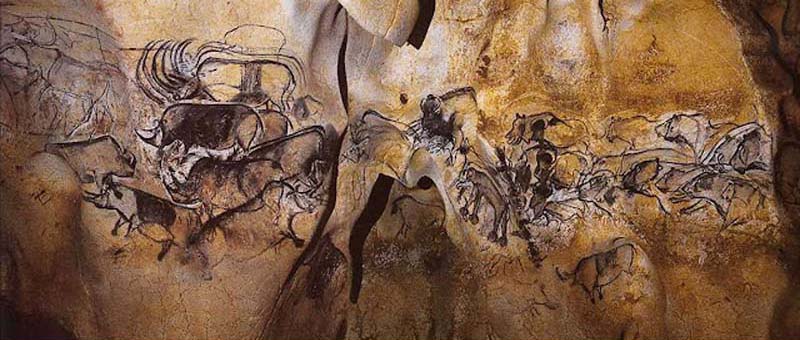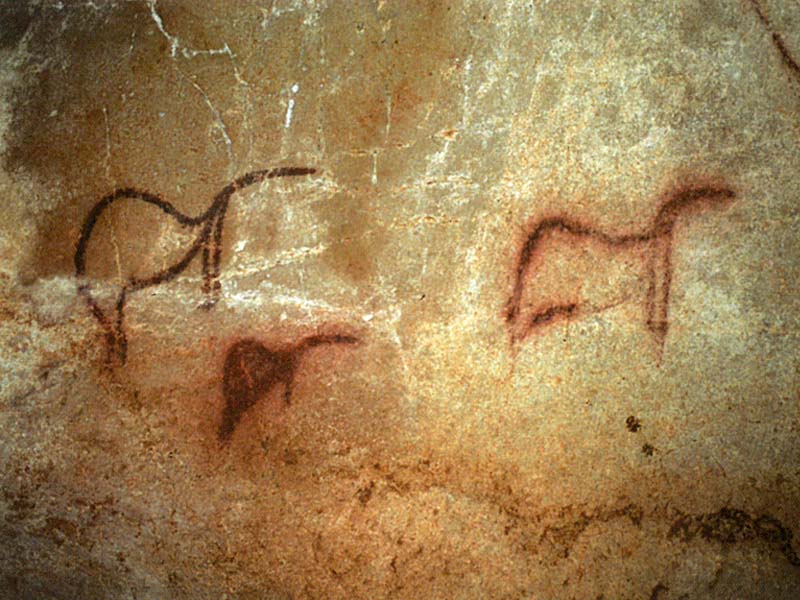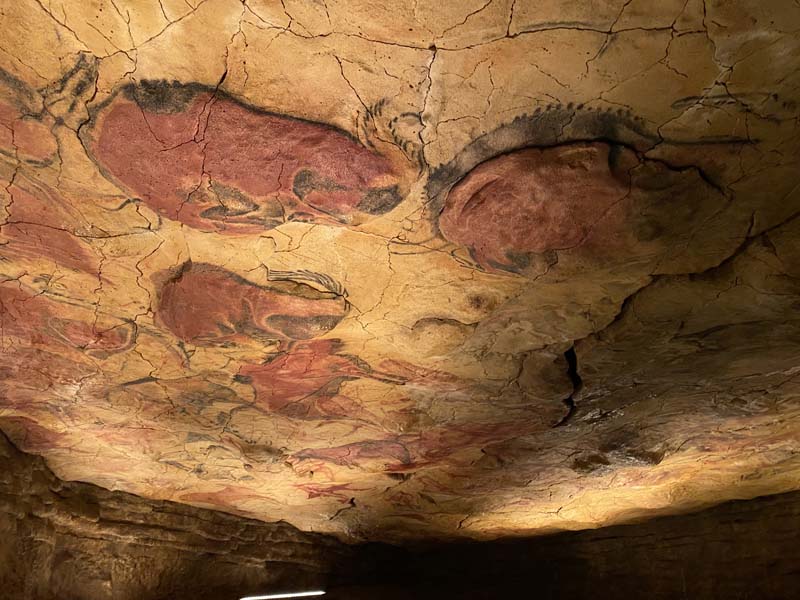di Alessandra De Nardis
An article by the French journalist Manon Meyer appeared on National Geographic on January 3, 2023 entitled: "Why did prehistoric men and women paint in caves?"; the text is an interview with Jean-Loïc Le Quellec, prehistoric archaeologist, anthropologist and director emeritus of research at the CNRS who recently published an impressive 888-page study on the subject: The original cave, Art, Myths and First Humanities, ed. La Decouverte.
What prompted men and women to travel hundreds of metres, in some cases even kilometers in a potentially dark and dangerous environment in which they were often forced to paint lying down due to the limited space available? With a study of nearly 20.000 images, half of them dots and dashes, the other half animals, Le Quellec believes he has found the answer.

The panel of lions in the Chauvet Cave, Auvergne-Rhône-Alpes, France is one of the best known and most important prehistoric sites in Europe: the shape of the wall seems to represent a large vulva on which animals have been painted that emerge or enter it.
Most specialists have long agreed on the possible link between mythology and story present in Paleolithic paintings but the scholar now claims to have found one myth in particular among the thousand possible that could support this thesis and justify the artistic expeditions into the depths of the caves .
We at Prehistory in Italy had already reported on the same topic the research of dr. Julien D'Huy, specialized in the phylogenetics of myths who, to find the "first story" that could provide the original matrix of the myth, collected and analyzed dozens and dozens of legends from all over the world. Using the phylogenetic tree method of evolutionary biologists (statistical methods for classifying living species) he has discovered a nucleus in which the same myth seems to be hidden which tells of a animal-woman. In searching for him, Jean-Loïc Le Quellec uses tools similar to those of Julien D'Huy but the primordial tale that he identifies tells of a mythical period in which humans and animals lived underground. The story, here very simplified, tells that some of them came out passing through a cave to colonize the planet. Human beings, animalized during their life underground, transformed during their emergence from the ground. Other living beings instead remain underground for reasons that differ according to the stories. It is on this account that he calls the "myth of primordial emergence" upon which he establishes the hypothesis to explain the cave paintings.

The depiction of the “bison-women” of the Pech-Merle cave, France: women turning into bison or bison-animals emerging as women?
At the time, creation was probably thought of as a perpetual event, that is, it happened every day. Perhaps cyclical we will say how cyclical the return to the Earth must have been given that time for our ancestors was perceived as a spiral from which everything is born and everything returns, far from the linear time we are used to today. So, Le Quellec continues, rituals were necessary and their performance necessary to ensure that the animals on which their survival depended continued to leave the Earth.
This story recalls the ancient myth of the cosmic egg which in its cosmogonic value symbolizes the primordial unity of being, the perfect, undivided totality which precedes the separation of the elements and the birth of the visible universe.
If this were the case, these prehistoric artistic expressions would represent the first self-aware perception by human groups as beings differentiated and divided from the whole even if in continuous need for connection; wall art as the first attempt to narrate and justify one's diversity and at the same time participate in the gesture of creation; in short, a desire to control those events which, beyond one's understanding, have always been the most powerful engine that has animated every religion. The latter are necessary considerations to underline how much the men and women of the time felt the Earth as the Mother of all things and how every living being would return to it to continue through death to feed life.
Returning to Le Quellec he argues that in the Western world, this principle of primordial emergence has been supplanted by the biblical narrative in which the beginning is unique and absolute: God created the Earth and all that follows from "and there was light" .
To prove the veracity of his discovery, Le Quellec used two methods.
The first is based on the geographical distribution of myths. By immersing yourself in the many available data, in fact, you can date the myths. For example, if a complex story is present in northeastern Eurasia and northwestern America, it can be deduced that it was transported by human migrations, when the passage between these two continents was still possible on foot; given that the Bering Strait was covered by the sea 16.000 years ago it can be deduced that the myth is therefore at least 16.000 years old.
Le Quellec cataloged 749 models of the "myth of primordial emergence" found in very different geographical areas; sometimes they are full of bizarre details that do not fit into the "primary" narrative and when we find these strange details that are not necessary for the basic story, in populations that have never been in contact, it is one of the clues that this myth is it is widespread in the course of human migrations after leaving Africa 100.000 years ago.
The second method used is a phylogenetic software we mentioned above which allows you to create a sort of family tree of myths. It consists simplifying of transforming each of the thousands of myths into a sequence of 0 or 1 depending on the absence or presence of their basic element. The more similar the myths are, the more similar their codes are, the closer their common ancestor is. With this technique you can see that the stories change over time and the further away you are from Africa, the more the stories become different.
In some cultures today this myth is still told, for example among the Native Americans. Emergence myths, particularly prevalent among Native American populations, provide us with the best examples of such subterranean realms. They tell of how the first human beings were brought to the surface to live in the sunlight only after having remained for a long time under the earth's surface, in a "larval" state, so to speak, and after having developed a rudimentary physical form and a human consciousness. According to the native populations, this emergence from the underworld marks the birth of man of the present era—or, to use a phrase typical of American populations, of the "Fifth Sun"—and also represents the transition from childhood and from dependence on womb of Mother Earth to maturity and independence.
In most cases, the first humans who lived in Mother Earth's womb are said to have had a demi-animal or demi-human form. This brings to mind the mythical beliefs of the Australian aborigines, according to which at the beginning, in the "Dreamtime", the world already existed but its forms were undifferentiated, which is why there was no precise distinction between gods, beings humans and animals; the beings differentiated only later, with the end of the "Time of Dream". Even for Native Americans, human beings only fully developed as such after they ascended to the earth's surface.
However, in very large areas of the globe, this very ancient myth is absent today; in Europe and the Middle East, Christianity and Islam tell a story of origins directly from the Koran or the Bible, texts that have erased all traces of the primordial myth.
Alessandra de Nardis, 8 January 2023
Source: National Geographic


